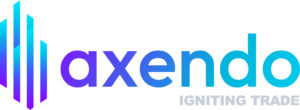
Learning & Development
TIPS FOR PERSONAL AND CAREER GROWTH
Robust Individual Development Plan
As the Head of HR, I believe in the significance of having a robust development plan in place. Investing in your growth is not only vital for your career advancement but also essential for personal fulfillment. Here are some tips to help you create an impactful individual development plan, emphasizing the importance of taking ownership of your growth with the support of your line manager.
1. ASSESS YOUR CURRENT SITUATION
The foundation of any development plan begins with a thorough self-assessment. Reflect on your current role, responsibilities, and recent efforts in professional development. Ask yourself:
– Are you where you envisioned yourself at this stage of your career?
– What are your strengths and areas for improvement?
Feedback from your line manager and peers can provide valuable insights, serving as a basis for drafting your initial plan. To assist with self-assessment, consider using free tools such as:
– Myers-Briggs Type Indicator (MBTI): Websites like 16Personalities offer free MBTI-based assessments that provide insights into your personality type and preferences.
– StrengthsFinder: While the full Gallup StrengthsFinder is paid, the HIGH5 Test offers a free alternative to help you identify your top strengths.
– CareerExplorer: This platform offers a free comprehensive career test that assesses your interests, personality, and preferences to suggest suitable career paths.
2. DEFINE YOUR GOALS
Establish clear, short-term, and long-term career goals. Whether you aim to excel in your current role or aspire to a new position, having defined objectives will guide your development journey. Remember, these goals can evolve, so revisit and adjust them as necessary.
3. IDENTIFY SKILL GAPS
After setting your goals, identify the skills and knowledge required to achieve them. Determine the gaps between your current capabilities and your desired skill set. This step is crucial in mapping out your development path.
4. EXPLORE DIVERSE LEARNING OPPORTUNITIES
Development doesn’t have to be expensive or confined to formal training. Consider a variety of learning methods:
– On-the-Job Learning (70%): Engage in stretch assignments, special projects, and cross-functional teamwork to gain practical experience.
– Relationships and Networking (20%): Seek mentorship, coaching, and feedback from experts within your network.
– Formal Training Programs (10%): Enroll in online courses, or participate in classroom training and self-learning initiatives.
– Utilize accessible platforms like Coursera, which offer a wide range of courses at affordable prices, or the free online courses from Harvard University.
These platforms provide flexibility, allowing you to learn at your own pace and according to your schedule.
5. SET SMART OBJECTIVES
When setting your developmental goals, ensure they are SMART:
– Specific: Clearly define what you want to achieve.
– Measurable: Establish criteria to track progress.
– Achievable: Set realistic goals within your reach.
– Realistic: Align your goals with your capabilities and resources.
– Timely: Set a timeframe for achieving your goals.
6. MONITOR PROGRESS AND REVISE
Keep a record of your progress and be open to revising your plan as needed. Regularly assess your achievements and areas for improvement. This ongoing process will help you stay motivated and on track.
Your development plan is more than a document; it’s a roadmap for your future. Take ownership of your growth, engage actively in the process, and collaborate with your line manager to ensure your goals are aligned with the company’s objectives.

- VERONIQUE ADEMAR
- Group Head of HR
